Pasta carbonara is a quintessential Italian dish that embodies simplicity and flavor. With just a few basic ingredients—pasta, eggs, cheese, and cured pork—you can create a rich, creamy, and satisfying meal. However, mastering carbonara requires attention to detail and technique to avoid common pitfalls. In this comprehensive guide, we’ll delve into the essential tips for making perfect carbonara every time.
Ingredients Matter
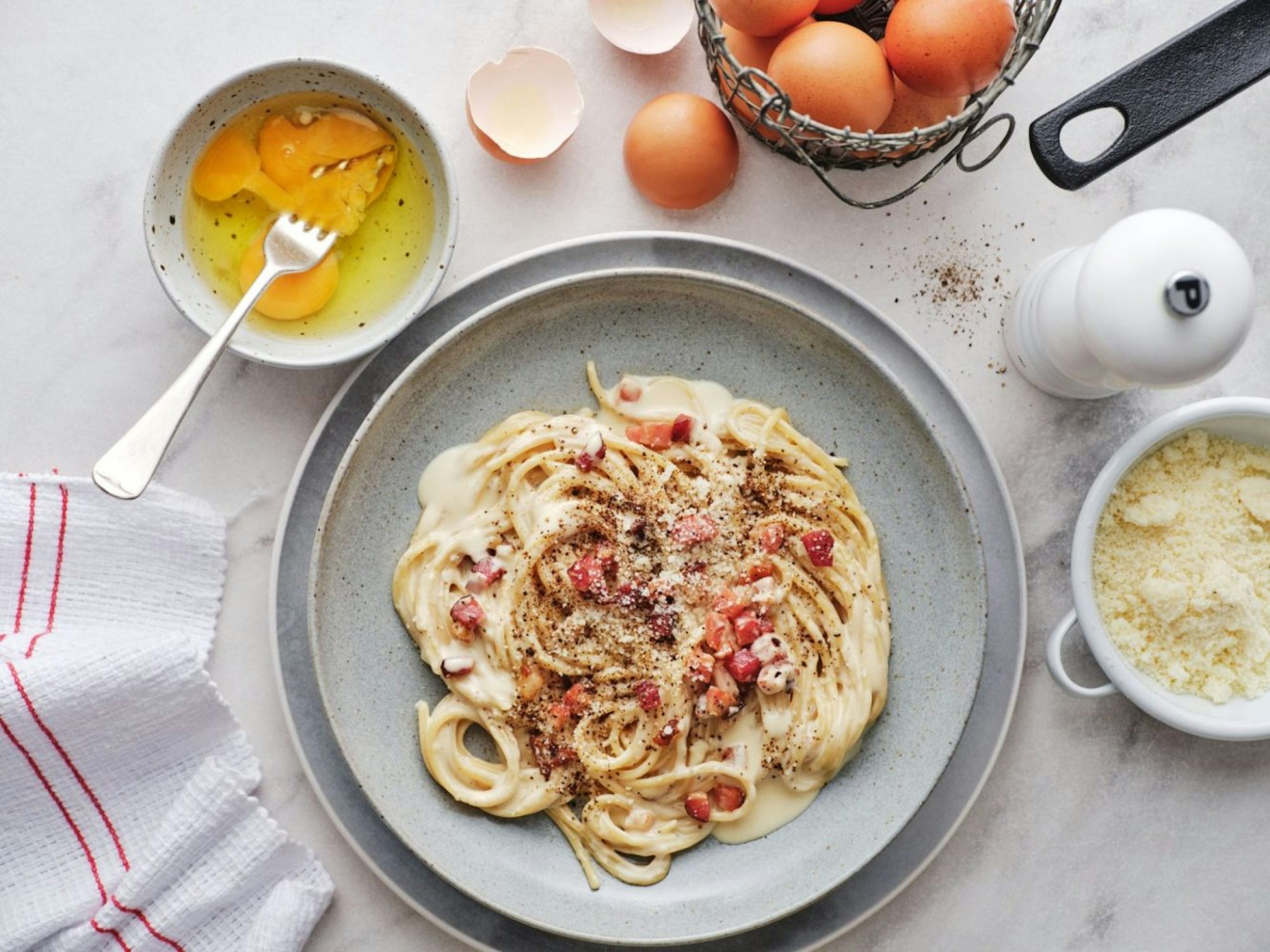
Choose the Right Pasta
The type of pasta you use for carbonara can significantly impact the dish’s texture and how well the sauce adheres. While spaghetti is the classic choice due to its thin, long strands that evenly distribute the sauce, you can also experiment with other pasta shapes like bucatini, rigatoni, or fettuccine. Bucatini, similar to spaghetti but thicker and with a hollow center, is particularly adept at capturing the creamy sauce, enhancing each bite. Rigatoni and fettuccine, with their ridged or wide surfaces, also hold the sauce well, offering a slightly different texture experience. The key is to choose a pasta that can carry the sauce effectively without overwhelming it.
Quality of Pork
The cured pork used in carbonara is a cornerstone of the dish, providing essential flavor and texture. Authentic carbonara traditionally uses guanciale, which is cured pork cheek. Guanciale has a distinctive, rich taste and a tender, fatty texture that renders beautifully when cooked, infusing the dish with its savory flavor. If guanciale is not available, pancetta is a good substitute; it is made from pork belly and has a similar, though slightly less intense, flavor profile. Bacon can also be used in a pinch, but it introduces a smokier flavor that deviates from traditional carbonara. Regardless of the type of pork, the quality is paramount. Opt for high-quality, well-cured pork to ensure the best flavor.
Fresh Eggs
Eggs are the foundation of carbonara’s creamy sauce. Using fresh, high-quality eggs ensures a rich and flavorful sauce. It’s important that the eggs are at room temperature before use, as cold eggs can cause the sauce to seize and clump when mixed with the hot pasta. Room temperature eggs blend more smoothly, resulting in a silkier sauce. Additionally, the ratio of yolks to whites is crucial. More yolks than whites are used, contributing to the luxurious texture and rich flavor of the sauce. The freshness of the eggs also impacts the dish; fresher eggs have firmer whites and more vibrant yolks, enhancing both the texture and color of the sauce.
Pecorino Romano Cheese
Cheese is another vital component of carbonara, adding a sharp, salty depth to the sauce. Pecorino Romano, a hard, salty Italian cheese made from sheep’s milk, is the traditional choice. Its strong, tangy flavor complements the richness of the eggs and the savory notes of the guanciale. Grating the cheese finely ensures it melts smoothly into the sauce. If Pecorino Romano is not available, Parmigiano-Reggiano (Parmesan) can be used as a substitute, though it has a milder flavor and less sharpness. Using high-quality cheese and incorporating it into the egg mixture helps create a cohesive, flavorful sauce that clings to the pasta.
Freshly Ground Black Pepper
While not always highlighted as a primary ingredient, freshly ground black pepper is essential in carbonara. It adds a subtle heat and complexity that balances the richness of the sauce. The freshly ground pepper has a more vibrant and aromatic flavor compared to pre-ground pepper, enhancing the overall taste of the dish. It’s typically added during the final mixing stage and as a garnish, allowing its spicy notes to shine through without overpowering the other ingredients.
Preparation Steps

Room Temperature Eggs
Why It Matters
Using room temperature eggs is a crucial step in achieving a smooth and creamy carbonara sauce. Cold eggs can seize and form clumps when they come into contact with the hot pasta, resulting in a sauce with an undesirable texture. Room temperature eggs, on the other hand, blend more seamlessly into the pasta, ensuring a glossy, velvety finish.
How to Achieve It
To bring your eggs to room temperature, take them out of the refrigerator at least 30 minutes before you begin cooking. If you’re short on time, you can place the eggs in a bowl of warm water for about 5-10 minutes. This gentle warming process helps in maintaining the integrity of the sauce, preventing it from turning lumpy or grainy.
Properly Whisk the Eggs
Importance of Whisking
The whisking process is integral to the texture and consistency of your carbonara sauce. By thoroughly whisking the eggs, you ensure that the yolks and whites are fully integrated, which is essential for a smooth sauce. This step also helps in incorporating the cheese into the egg mixture, creating a uniform base for your sauce.
Technique
Start by cracking the eggs into a bowl. Use a whisk to beat the eggs vigorously until the yolks and whites are completely combined. There should be no visible streaks of egg white. Once the eggs are well-mixed, gradually add the grated Pecorino Romano cheese while continuing to whisk. This process helps to blend the cheese evenly, which is crucial for the sauce’s consistency. The resulting mixture should be thick and homogeneous, ready to coat the pasta uniformly.
Cooking the Pasta
Salting the Water
Properly salting the pasta water is an often overlooked but vital step in preparing carbonara. The salt seasons the pasta as it cooks, enhancing the overall flavor of the dish. The general rule of thumb is to use about 1-2 tablespoons of salt per gallon of water. The water should taste like the sea—salty but not overpowering. This seasoning ensures that the pasta itself is flavorful and complements the sauce perfectly.
Al Dente
Cooking the pasta to al dente is crucial for carbonara. Al dente pasta has a firm bite and maintains its structure, which is important for holding the sauce. Overcooked pasta can become mushy and won’t provide the same satisfying texture. Check the pasta a minute or two before the package’s suggested cooking time. It should be tender yet firm to the bite. Remember, the pasta will continue to cook slightly when you mix it with the hot sauce, so it’s better to undercook it slightly rather than overcook.
Preparing the Pork
Rendering the Fat
Rendering the fat from the cured pork, whether you’re using guanciale, pancetta, or bacon, is essential for flavoring the carbonara. Cut the pork into small cubes or strips and place it in a cold pan. Turn the heat to medium and cook slowly, allowing the fat to melt and render out. This process not only crisps the pork but also produces a rich, flavorful fat that will be used in the sauce.
Achieving the Right Texture
The goal is to cook the pork until it is crispy on the outside but still tender on the inside. This texture contrast adds depth to the dish. Be careful not to overcook the pork, as it can become too hard and chewy. Once the pork is done, remove it from the pan with a slotted spoon and set it aside, leaving the rendered fat in the pan for the next step.
Mixing the Sauce
Off the Heat
Mixing the sauce off the heat is one of the most critical steps in making carbonara. Adding the egg mixture to the pasta over direct heat can cause the eggs to scramble, resulting in a sauce with chunks of cooked egg instead of a smooth, creamy consistency. The residual heat from the freshly cooked pasta is sufficient to cook the eggs gently and create a cohesive sauce.
Gradual Addition
After draining the pasta, quickly return it to the pan with the rendered pork fat. Make sure the pan is off the heat. Slowly pour the egg and cheese mixture into the hot pasta, stirring constantly with tongs or a spoon. This gradual addition allows the eggs to thicken the sauce without curdling. Continue to stir vigorously to ensure that the sauce coats every strand of pasta evenly. If the sauce appears too thick, you can add a small amount of reserved pasta water, a little at a time, until you reach the desired consistency.
Cooking Techniques
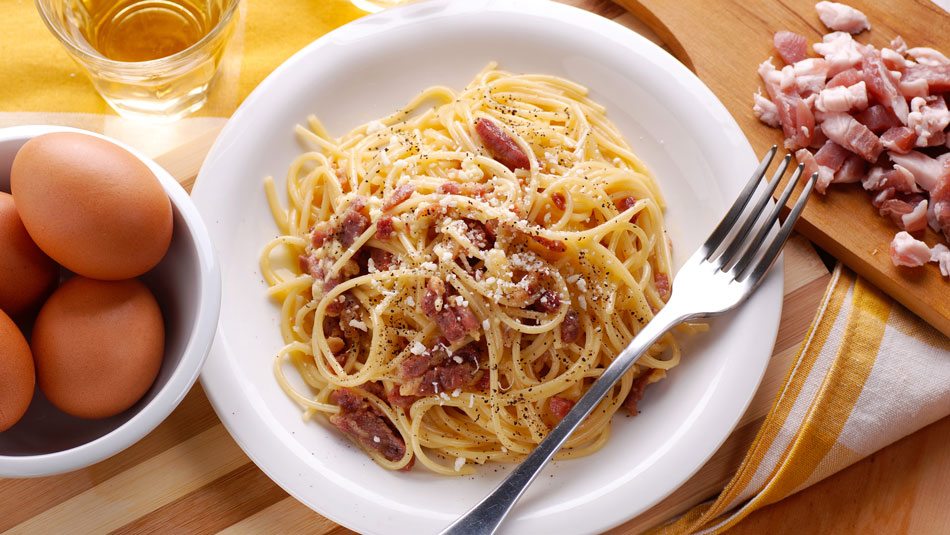
Cooking the Pasta
Salting the Water
Properly salting the pasta water is essential for flavor. The salt infuses the pasta, ensuring that every bite is seasoned from the inside out. The general rule of thumb is to use about 1-2 tablespoons of salt per gallon of water. This level of salinity mimics the sea, creating a balanced and flavorful pasta. It’s crucial to add the salt to the water once it starts to boil, ensuring it dissolves quickly and evenly. Salting the water properly lays a flavorful foundation for your carbonara.
Al Dente
Cooking the pasta to al dente is vital for the texture and overall dish quality. Al dente, meaning “to the tooth,” describes pasta that is tender yet firm when bitten. This texture is important because it allows the pasta to hold up when mixed with the sauce and provides a pleasant chewiness. To achieve al dente, follow the cooking time suggested on the pasta package, but start checking a minute or two before the indicated time. Bite into a piece to test; it should be cooked through but still firm in the center. Remember, the pasta will continue to cook slightly when mixed with the hot sauce, so it’s better to undercook it a bit rather than overcook.
Preparing the Pork
Rendering the Fat
Rendering the fat from the pork is crucial for flavoring the carbonara. Start with high-quality guanciale, pancetta, or bacon, cut into small cubes or strips. Place the pork in a cold pan and gradually heat it over medium to medium-low heat. This slow cooking process allows the fat to render out, turning the pork crispy while releasing flavorful fat that will be used in the sauce. Stir occasionally to ensure even cooking. Once the pork is crispy and the fat is rendered, remove the pork with a slotted spoon and set it aside, leaving the rendered fat in the pan.
Achieving the Right Texture
The texture of the pork should be crispy on the outside but still tender and chewy on the inside. This contrast adds depth to the dish, providing a satisfying bite. Overcooking can make the pork too hard and dry, detracting from the dish’s texture. Aim for a balance where the pork pieces are golden brown and crispy but still slightly chewy inside. This texture enhances the overall mouthfeel of the carbonara, complementing the creamy sauce and tender pasta.
Mixing the Sauce
Off the Heat
One of the most critical steps in making carbonara is mixing the sauce off the heat. The residual heat from the cooked pasta is enough to gently cook the eggs and cheese mixture, creating a creamy sauce without scrambling the eggs. Direct heat can cause the eggs to cook too quickly, resulting in a sauce with a scrambled egg texture. To prevent this, remove the pan from the heat source before adding the egg mixture. This step ensures a smooth, cohesive sauce.
Gradual Addition
After cooking the pasta and rendering the pork, it’s time to combine everything. First, ensure the pasta is drained but reserve some of the pasta cooking water. Return the pasta to the pan with the rendered fat and pork, making sure the pan is off the heat. Slowly pour the egg and cheese mixture into the hot pasta, stirring continuously with tongs or a spoon. This gradual addition allows the eggs to thicken the sauce without curdling. If the sauce appears too thick, add a small amount of the reserved pasta water, a little at a time, until you reach the desired consistency. The starch in the pasta water helps to bind the sauce, making it creamy and smooth.
Keep the Pasta Moving
Ensuring Even Coating
While adding the egg and cheese mixture, it’s important to keep the pasta moving. Use tongs or a large spoon to continually toss the pasta, ensuring that every strand is evenly coated with the sauce. This constant movement prevents the eggs from sitting in one spot and cooking too quickly, which can cause clumps. By keeping the pasta moving, you ensure a uniform, creamy coating on every piece of pasta.
Distributing the Pork
As you mix the sauce, also ensure that the crispy pork pieces are evenly distributed throughout the pasta. This even distribution ensures that each bite of carbonara includes a balance of flavors and textures—creamy sauce, tender pasta, and crispy pork.
Final Adjustments
Adjusting the Consistency
Once the egg mixture is fully incorporated and the pasta is evenly coated, check the consistency of the sauce. It should be glossy and cling to the pasta without being too thick or too runny. If the sauce is too thick, add a bit more reserved pasta water, a tablespoon at a time, until you achieve the desired texture. If it’s too thin, you can add a bit more grated cheese to thicken it up. The goal is a smooth, creamy sauce that envelops the pasta.
Seasoning
Taste the pasta before serving and adjust the seasoning if necessary. Given that the cheese and pork are both salty, you may not need to add much salt. However, a final sprinkle of freshly ground black pepper is essential. The pepper adds a subtle heat and complexity that enhances the overall flavor of the dish.
Serving
Immediate Serving
Carbonara is best served immediately after it’s made. The sauce can thicken and lose its creaminess if it sits too long. Serve the pasta hot, garnished with additional grated Pecorino Romano and a sprinkle of freshly ground black pepper. If desired, you can also drizzle a bit of the rendered pork fat over the top for extra flavor.
Final Touches

Seasoning
Pepper
Freshly ground black pepper is a must in carbonara. It adds a subtle heat and complements the flavors of the cheese and pork.
Salt
Be cautious with adding extra salt, as both the cheese and the cured pork are already salty. Taste before seasoning further.
Serving
Immediate Serving
Carbonara is best served immediately. The sauce can thicken and become less creamy if left to sit.
Garnishing
Top each serving with additional grated Pecorino Romano and a sprinkle of black pepper. A drizzle of the rendered pork fat can also enhance the flavor.
Common Mistakes to Avoid
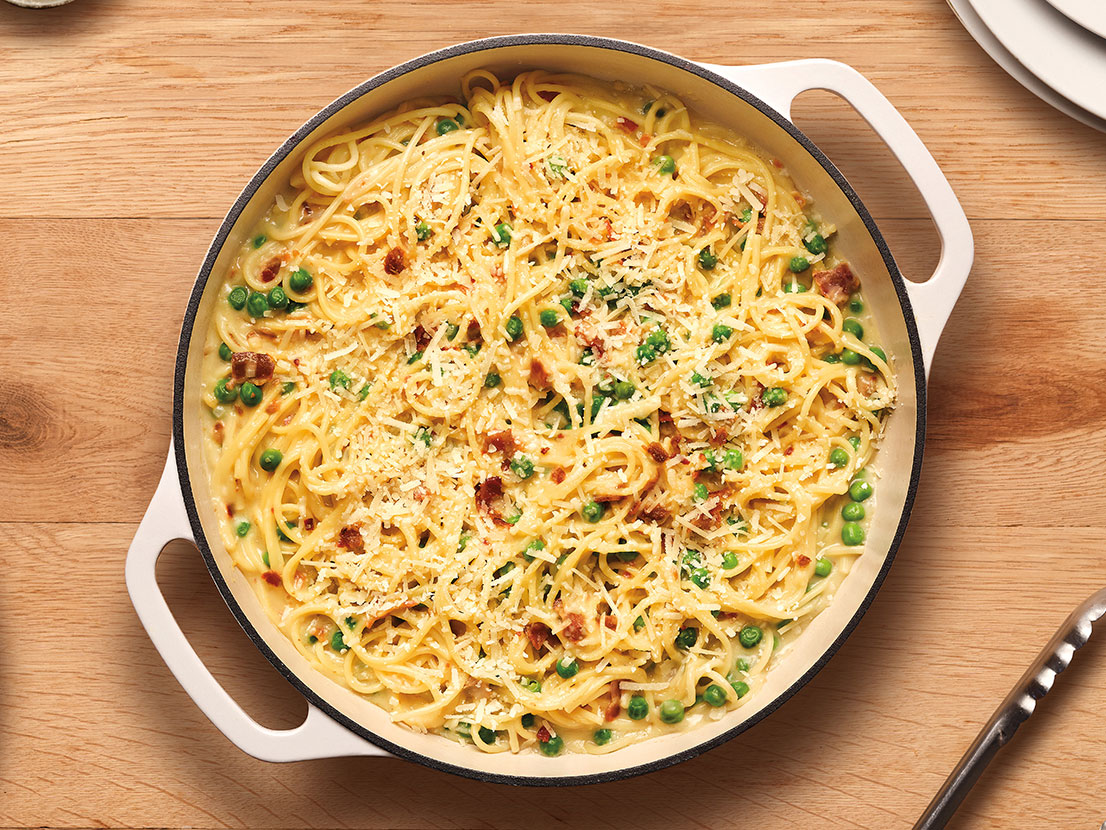
Using the Wrong Ingredients
Substituting Cheese
A common mistake in making carbonara is using the wrong type of cheese. Authentic carbonara calls for Pecorino Romano, a hard, salty Italian cheese made from sheep’s milk. Its sharp, tangy flavor is essential to the dish. Substituting with Parmesan (Parmigiano-Reggiano) can result in a milder flavor that lacks the necessary sharpness. While Parmesan can be a backup if Pecorino Romano is unavailable, the two cheeses have distinct tastes, and using the authentic cheese makes a noticeable difference in flavor.
Choosing the Pork
The type of cured pork is another critical component. Traditional carbonara uses guanciale, which is cured pork cheek. Guanciale has a rich, robust flavor and a tender, fatty texture that is ideal for rendering. Using pancetta or bacon as substitutes can alter the flavor profile. Pancetta, made from pork belly, is closer to guanciale but still milder. Bacon, while readily available, introduces a smoky flavor that deviates from the traditional taste. If you want an authentic carbonara, seek out guanciale. If using pancetta or bacon, be aware of the flavor differences they bring.
Improper Egg Handling
Cold Eggs
Using cold eggs is a frequent error that can result in a clumpy sauce. Cold eggs do not blend as smoothly and can cause the sauce to seize when mixed with the hot pasta. Always use room temperature eggs to ensure a silky, smooth sauce. Take the eggs out of the refrigerator at least 30 minutes before you start cooking. If pressed for time, place them in a bowl of warm water for a few minutes to bring them up to temperature.
Incorrect Whisking
Another mistake is not whisking the eggs thoroughly. The egg yolks and whites must be fully integrated to create a uniform texture. Incomplete whisking can leave streaks of egg white, which may cook unevenly and create an undesirable texture in the sauce. Whisk the eggs vigorously until no streaks remain, and incorporate the cheese into the mixture to create a consistent base for the sauce.
Overheating the Sauce
Mixing Over Heat
Mixing the egg and cheese mixture over direct heat is a common error that leads to scrambled eggs instead of a smooth sauce. The gentle residual heat from the pasta is sufficient to cook the eggs and create a creamy sauce. Remove the pan from the heat before adding the egg mixture to prevent the eggs from curdling. This step is crucial for achieving the right texture.
Not Moving the Pan
Even after turning off the heat, the pan itself can retain enough heat to scramble the eggs. To avoid this, not only should you turn off the burner, but you should also move the pan away from the heat source. Transfer the pasta and rendered fat to a cool mixing bowl before adding the egg mixture. This precaution helps maintain the delicate temperature needed to create a smooth, creamy sauce.
Incorrect Sauce Mixing
Adding Eggs Too Quickly
Pouring the egg mixture into the pasta too quickly can result in uneven cooking and a lumpy sauce. The eggs need to be added gradually while constantly stirring the pasta. This slow addition allows the eggs to thicken gently, creating a smooth sauce that coats the pasta evenly. Add the egg mixture in small increments, stirring continuously with tongs or a spoon.
Not Using Reserved Pasta Water
Neglecting to use reserved pasta water is a missed opportunity to perfect the sauce’s consistency. The starchy pasta water helps to emulsify the sauce, making it creamy and smooth. If the sauce becomes too thick, add the reserved pasta water a little at a time until you achieve the desired texture. This step is essential for creating a cohesive sauce that clings to the pasta without being overly heavy or dry.
Ignoring Timing and Temperature
Overcooking the Pasta
Overcooked pasta can ruin the texture of your carbonara. The pasta should be cooked al dente, meaning it is tender yet firm to the bite. Overcooked pasta becomes mushy and doesn’t provide the necessary structure to support the sauce. Start checking the pasta a minute or two before the package instructions suggest, and drain it as soon as it reaches al dente.
Letting the Pasta Cool
Allowing the pasta to cool before mixing it with the sauce is another mistake to avoid. The pasta should be hot when you combine it with the egg mixture to ensure the residual heat cooks the eggs and creates a creamy sauce. If the pasta cools too much, the eggs won’t cook properly, resulting in a runny sauce. Work quickly to mix the pasta and egg mixture immediately after draining the pasta.
Final Adjustments and Serving
Neglecting to Taste and Adjust Seasoning
Failing to taste and adjust the seasoning before serving can lead to an unbalanced dish. While Pecorino Romano and guanciale add significant saltiness, the final dish may still need a touch of salt or pepper. Taste the pasta after mixing the sauce and adjust the seasoning as necessary. A final sprinkle of freshly ground black pepper enhances the flavor and adds a finishing touch.
Serving Too Late
Carbonara is best enjoyed immediately after preparation. The sauce can thicken and lose its creamy texture if left to sit. Serve the pasta promptly to ensure the best texture and flavor. If you need to delay serving, keep the pasta warm over very low heat and stir frequently to maintain the sauce’s consistency.
Advanced Tips
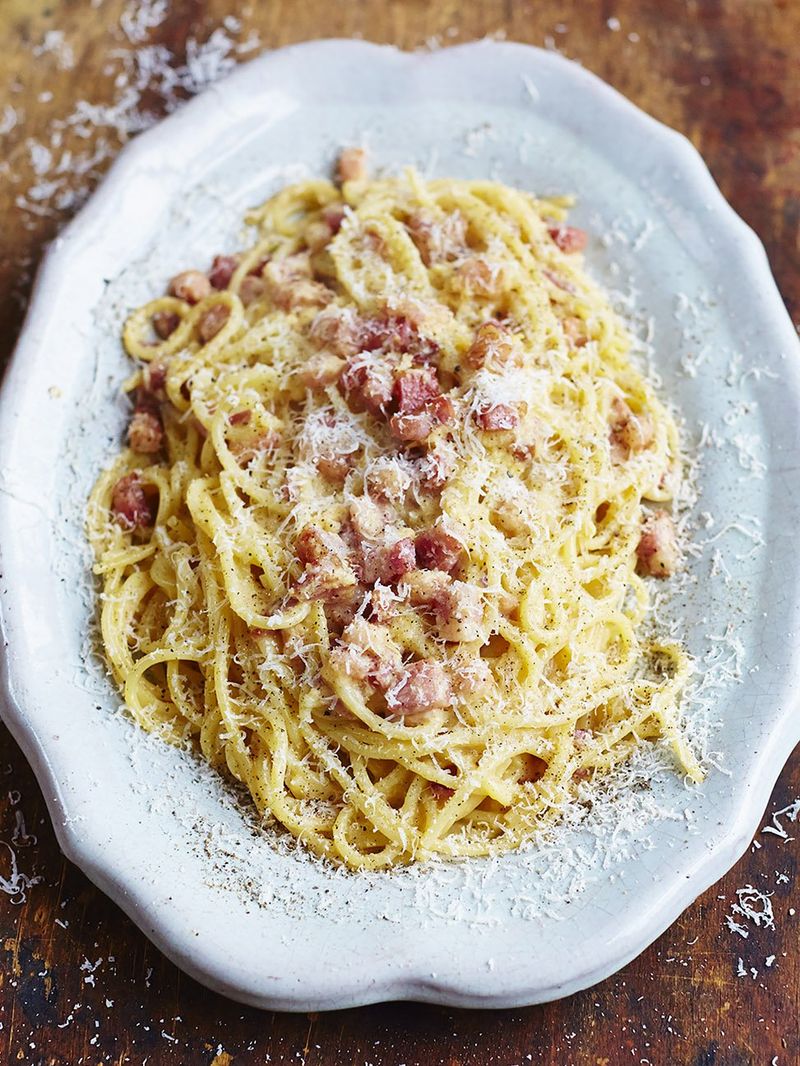
Using a Double Boiler
For more control over the heat, you can use a double boiler method to mix the egg and cheese mixture with the pasta. This technique helps in preventing the eggs from scrambling.
Customizing with Add-Ins
While traditional carbonara is straightforward, you can experiment with add-ins like peas, mushrooms, or even a touch of truffle oil for a unique twist. However, be mindful that these additions can alter the classic flavor.
Mastering the Emulsion
The key to a perfect carbonara sauce is emulsification. Reserve some pasta water and add it gradually to the pasta and egg mixture to create a creamy sauce. The starch in the pasta water helps bind the sauce, giving it a silky texture.
Perfecting the Texture
Achieving the ideal texture requires practice. The sauce should be glossy and cling to the pasta without being overly thick. Adjust the amount of cheese and pasta water until you reach the desired consistency.
Recipe: Classic Carbonara
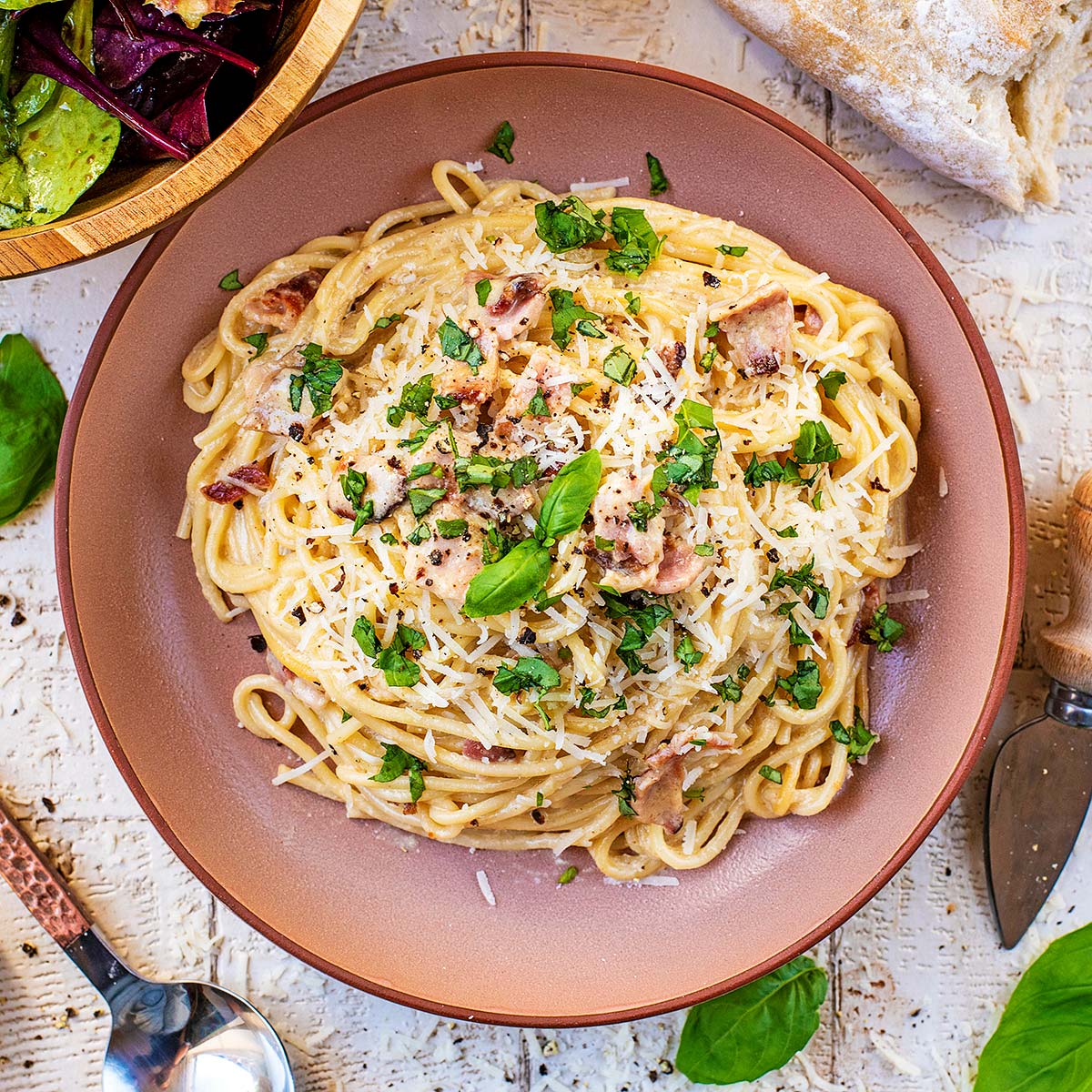
Here’s a step-by-step recipe to help you master the art of making carbonara.
Ingredients
- 400g spaghetti
- 200g guanciale (or pancetta)
- 4 large eggs (at room temperature)
- 100g Pecorino Romano cheese (grated)
- Freshly ground black pepper
- Salt
Instructions
- Prepare the Ingredients: Bring the eggs to room temperature and grate the Pecorino Romano cheese. Cut the guanciale into small cubes.
- Cook the Guanciale: In a large pan, cook the guanciale over medium heat until crispy and the fat is rendered. Remove from heat and set aside.
- Cook the Pasta: In a large pot of boiling salted water, cook the spaghetti until al dente. Reserve a cup of pasta water before draining.
- Whisk the Eggs: In a bowl, whisk together the eggs and grated Pecorino Romano until smooth.
- Combine Ingredients: Off the heat, return the drained pasta to the pan with the guanciale. Slowly pour in the egg mixture, stirring continuously. Add reserved pasta water as needed to achieve a creamy consistency.
- Season and Serve: Season with freshly ground black pepper and additional grated Pecorino Romano. Serve immediately.
Conclusion
Making perfect carbonara is all about mastering simple techniques and paying attention to detail. By using quality ingredients, understanding the importance of temperature, and mixing the sauce off the heat, you can create a deliciously creamy and authentic carbonara. Remember, practice makes perfect, so don’t be discouraged by initial attempts. With these tips, you’ll be well on your way to becoming a carbonara connoisseur.





